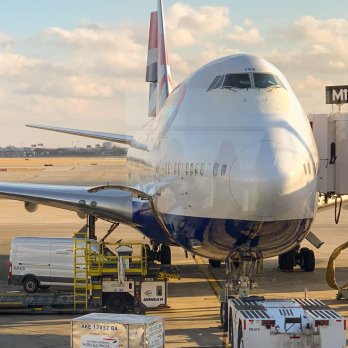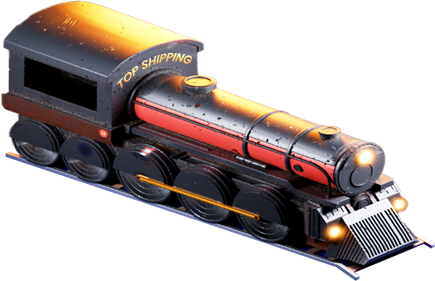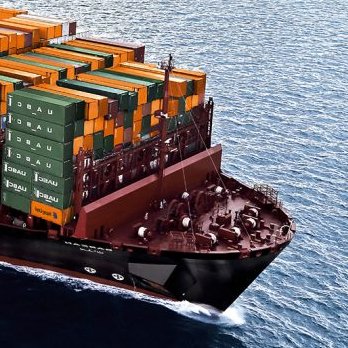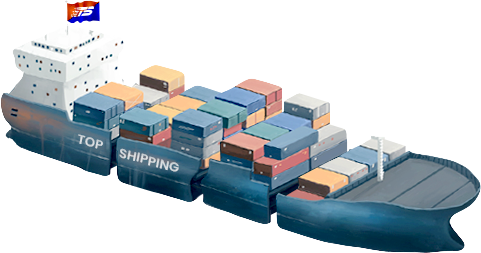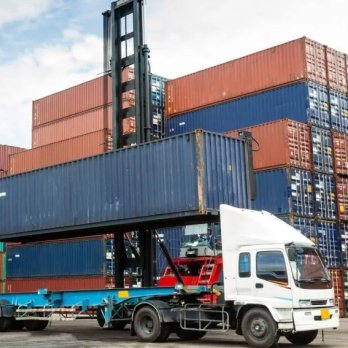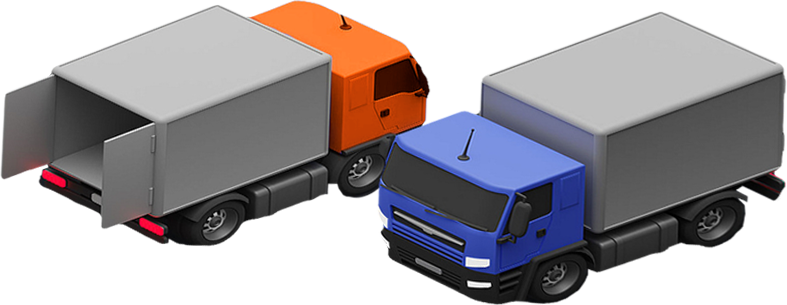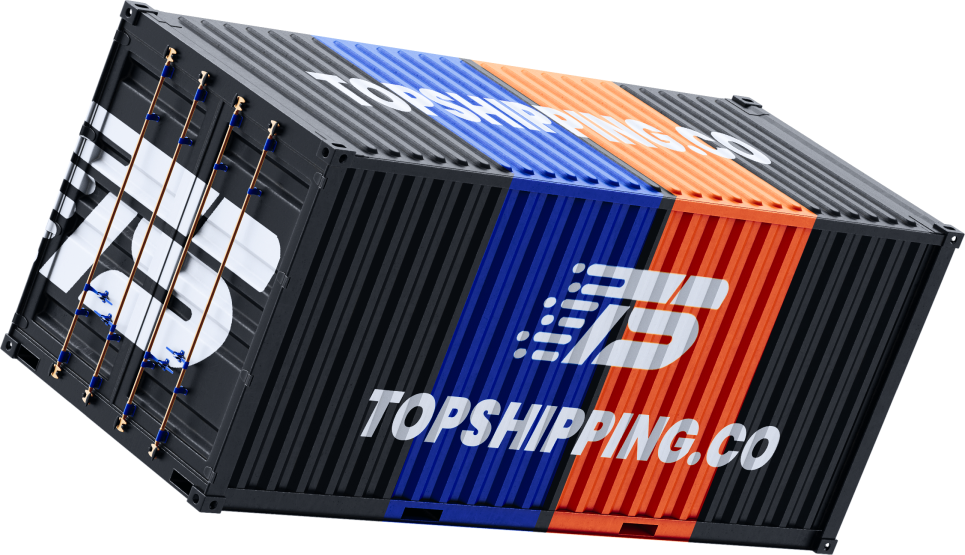From FCL, LCL, and DDP to air freight and express couriers like DHL and UPS, TopShipping provides various options to save money and increase delivery speed. With expert handling through main ports like Shanghai and direct connections to Prague, our tailored solutions simplify customs, minimize delays, and make import logistics straightforward.
Shipping from China to the Czech
Shipping from China to Czech Republic requires considering details like price, mode, and delivery date. FCL, LCL, DDP shipping, air cargo, and courier services like DHL, UPS, and FedEx are common choices for companies to import goods efficiently.
The shipping process from China requires sailing through significant ports such as Shanghai Port, where the cargo reaches Prague Airport in no time and as per regulations.
Businesses can obtain the most suitable import logistics by comparing sea freight rates, air cargo services, and DDP shipping solutions according to their needs.
With customized solutions offered by TopShipping, the shipping time from China to the Czech Republic is minimized while dealing with customs and compliance, making it easy.

Furthermore, China to Czech shipping remains a cost-effective and efficient way for Czech importers. Freight services from China provide convenient shipping solutions like sea transport and air cargo from China to Czechia, which are imperative to helping businesses remain competitive. Import logistics Czech Republic rely significantly on such practical solutions to supplement the growing demand for Chinese imports.
No matter one's focus on shipping time, cost or examination of various modes of transport, FCL, LCL, and DDP, shipping can be the deciding elements of a successful importation process.
TopShipping - Your fastest route for shipping from China to Czechia.

Available Shipping Methods from China to Czech
When choosing to ship goods from China to the Czech Republic, importers are confronted with numerous shipping options from China. Whether you decide on the sea, air freight, rail shipping, or courier service, your choice depends upon your priorities—speed, cost, or dependability.
Shipping Method | Good For | Transit Time | Shipping Costs | Shipping Costs | Major Czech Ports | Departure & Arrival Chinese Airports | Departure & Arrival Czech Airports | Pros | Cons |
Sea Freight (FCL/LCL) | Bulk goods, heavy machinery, furniture, non-urgent shipments | 30–50 days | FCL: ~$2,500 (20ft), ~$5,550 (40ft); LCL: ~$55/m³ | Shanghai, Ningbo, Shenzhen, Guangzhou | Hamburg, Bremerhaven, Rotterdam (followed by rail/truck to Czechia) | N/A | N/A | Cost-effective for large volumes; suitable for non-urgent shipments | Long transit time; potential delays due to weather or port congestion |
Air Freight | High-value electronics, perishable goods, urgent shipments | 3–7 days | ~$6.50/kg for 100kg shipments | Beijing, Shanghai, Guangzhou, Shenzhen | N/A | Beijing Capital International Airport, Shanghai Pudong International Airport, Guangzhou Baiyun International Airport | Václav Havel Airport Prague (PRG) | Fast delivery; reliable schedules | Higher cost; limited cargo capacity |
Rail Freight | Electronics, automotive parts, medium-sized shipments | 16–22 days | ~$60–$125/m³ | Xi’an, Chongqing, Chengdu, Zhengzhou | Prague (via Poland, Germany) | N/A | N/A | Balanced cost and speed; environmentally friendly | Limited capacity; potential delays due to geopolitical factors |
Door-to-Door (Express/Courier) | Small parcels, e-commerce goods, samples | 3–5 days (Express); 5–10 days (Air DDP); 35–50 days (Sea DDP) | Express: ~$7.5/kg; Air DDP: ~$6.5–$10.5/kg; Sea DDP: ~$150–$300/m³ | N/A | N/A | N/A | N/A | Simplified logistics; includes customs clearance | Higher cost for express; limited to smaller shipments |
Sea shipping remains one of the most popular international freight methods, especially for large shipments. Goods are usually exported from main ports such as the Port of Shanghai, Shenzhen, or Ningbo to EU ports such as Hamburg, Rotterdam, or Koper and then trucked to Czechia. It's the cheapest way to ship from China, but it's the slowest too.
If time is important, air freight via Prague Airport (PRG) offers the fastest way to ship from China. It is best for perishable or high-value goods and has strong logistics networks like DHL, UPS, and FedEx carriers. However, it costs more.
A middle ground is rail freight, thanks to the China-Europe Railway Express under the Belt and Road Initiative. This offers a balance of speed and cost, appropriate for medium-sized shipments that require guaranteed transit without the expense of air shipping.
Logistics solutions for Czech importers must also address service type: door-to-door vs port-to-port shipping. Door-to-door simplifies the process, especially for first-time importers, but port-to-port may be more economical for repeat shippers with local handling facilities.
Lastly, proper freight transportation China to the Czech Republic is all about understanding your product, deadline, budget—and pairing them up with the appropriate means of transport.
TopShipping offers easy and affordable shipping from China to Czech Republic through various methods like air freight, sea freight, railway freight, door-to-door, and express services. With intelligent comparison tools, real-time quotes, and end-to-end customs and compliance assistance, TopShipping enables you to choose the best solution for your needs — faster, simpler, and smarter.
Side-by-side comparison of shipping methods (sea vs air vs rail vs express)
- Sea freight: best for bulk/heavy consignments. Travel time: 30–45 days. Inexpensive but slow.
- Air freight: fastest delivery (5–10 days), costly, best for urgent or light-weight cargo.
- Rail freight: Balanced option (15–25 days). Faster than sea, cheaper than air.
- Express couriers: Handled by DHL, FedEx, and UPS—ideal for small packages, door-to-door, 3–7 days.
How to choose the best shipping method for your needs?
Decide on volume, urgency, and type of commodity. Fragiles such as electronics? Air. Bulky textiles? Sea. Mid-value consumer goods? Rail. Consider your goals and pair them with the appropriate means.
- Sea: Low cost, long transit
- Rail: Moderate cost and speed
- Air: High cost, fast delivery
- Express: Highest cost, but quickest and most convenient
What kind of goods are best suited for each transport method?
- Sea freight: furniture, industrial goods, high-volume consumer products
- Air freight: electronics, fashion, perishable goods
- Rail: textiles, auto parts, general consumer goods
- Courier: samples, small electronics, urgent documents
Incoterms and how they impact shipping choices
Master your Incoterms (for example, FOB, EXW, DDP). They determine who is responsible for and pays for each part of the end-to-end shipping process and whether you need a freight forwarder or courier service.
Multimodal logistics planning (e.g. sea + rail + truck)
Mixing modes—like sea freight to Hamburg and then rail to Prague—can save cost and time. Multimodal logistics is especially useful for importers dealing with complex supply chains.
Freight forwarder vs courier services for different shipping methods
Freight forwarders are utilized for bulk and offer flexibility with sea, rail, and air transport. Couriers are best used for B2C or small B2B shipping. Choose according to the size of the cargo and service requirements.
Shipping Costs from China to Czech Republic
Feature | Sea Freight (LCL) | Sea Freight (FCL - 20ft)) | Air Cargo | Express Courier (DHL / UPS / FedEx) |
Estimated Cost | $35–$50 per CBM | $2,000–$2,800 | $4.5–$8 per kg | $12–$18 per kg |
Transit Time | 30–40 days | 25–35 days | 5–10 days | 3–5 days |
Best For | Small volumes, non-urgent | Bulk shipments | Medium volume, time-sensitive | Small packages, urgent needs |
Customs & Handling | Requires local agent | Buyer handles at port | May need customs broker | Usually handled by courier |
Tracking & Support | Limited | Limited | Moderate | Full tracking & support |
Flexibility (Pickup/Delivery) | Moderate | Low | high | Very high |
It is crucial to understand shipping rates China to Czech for businesses seeking to import products efficiently. Whether you opt for sea freight cost per CBM or air cargo price per kg, different cost drivers in international logistics affect what you ultimately pay. Fuel prices, global demand, and port congestion are a few factors that drive variable prices.
Freight forwarders and websites like Freightos have freight cost calculation that allow importers to compare. Express couriers like DHL, UPS, and FedEx offer faster delivery at a premium cost.
The Incoterms (FOB, CIF, DDP) also indicate who pays for what part of the process.
Lastly, understanding the total shipping cost breakdown and insight into how to reduce import cost through efficient planning, volume management, and tax planning can result in significant savings.
Shipping from China to Czech — Cheap and Clear with TopShipping
At TopShipping, we keep prices from China to the Czech Republic transparent and straightforward. Our site provides instant price comparisons to identify the most affordable option for your requirements quickly. There are no hidden charges and surprises — just upfront pricing that guarantees you the best value for your shipment every time.

Factors That Affect Shipping Cost
When calculating your freight expenses, you must understand the major shipping cost variables that drive international freight pricing. Different logistics pricing factors influence your quote, some of which you can control while others are tied to the global marketplace.
Factor | Description | Cost Impact | Tips to Save Cost |
Mode of Transport | Sea is cheaper; Air is faster but costly; Rail is balanced | High (depending on mode) | Choose sea for non-urgent cargo |
Weight & Volume | Volumetric weight (CBM) vs actual weight (KG) affects pricing | Medium to High | Medium to High Optimize packaging to reduce CBM |
Cargo Type & Handling | Fragile, hazardous, or temperature-sensitive items cost more | High for special handling | Avoid unnecessary special handling |
Seasonality & Fuel Surcharges | Prices increase during holidays; fuel prices impact surcharges | Medium to High (time-based) | Avoid peak season; plan ahead |
As tracked by organizations like the World Bank or IATA, economic trends and operational costs like the Bunker Adjustment Factor (BAF) directly contribute to freight rate fluctuations. Sites like freight rate fluctuations give a visualization of how these economic and operational variables affect shipping rates in real time.
Understanding these rate influencers helps importers learn how prices are set and avoid risk and seasonality in cost.
Topshipping provides a more comprehensive solution for freight cost calculators, which not only compare rates from multiple carriers but also take into account shipment details such as volume, weight, Incoterms (FOB, CIF, DDP), and destination type. Users can instantly get estimates, see delivery timelines, and even receive recommendations for the most cost-effective routes — all in one place. It makes it easier for new and experienced importers to plan and budget accurately..
Mode of Transport
Mode selection is most critical. Comparisons of Air vs sea vs rail freight cost illustrate how compromises are necessary between cost and speed. Sea Freight tends to be the cheapest way to ship bulk cargo, and Air Cargo is the best way to make time-critical deliveries. Rail Freight and Express Courier offer intermediate solutions.
Weight and Volume
Shipping is typically billed based on dimensional weight or volumetric pricing. Carriers utilize CBM (cubic meters) or KG (kilograms) to figure chargeable weight. Understanding how volume vs weight billing works avoids surprise charges and optimizes packaging.
Cargo Type and Handling Needs
Special cargo like lithium batteries, pharmaceutical goods, or Refrigeration tend to have special handling fees. Transportation of Refrigerated cargo or dangerous goods also attracts special handling fees due to risk-based pricing. Knowing if your shipment falls under these categories can help you estimate the real cost beforehand.
Seasonality and Fuel Surcharges
Peak season shipping costs spike during global holidays like Golden Week or Black Friday. Carriers like to charge Peak Season Surcharge (PSS) and adjust for fuel with fuel adjustment factor mechanisms like BAF. Booking shipments outside of times of heavy demand can reduce costs significantly.

Transit Time from China to Czech Republic
Shipping Method | Average Transit Time | Main Hubs | Best For |
Sea Freight | 30–40 Days | Port of Shanghai → Port of Hamburg / Port of Koper | Cost-effective, bulk shipments |
Air Freight | 5–7 Days | PVG / PEK / CAN → Prague Airport (PRG) | Urgent, lightweight goods |
Rail Freight | 15–20 Days | Yiwu / Chengdu → Duisburg → Prague | Balanced speed and cost |
Transit time between China to Czech Republic varies depending on the shipping method, each with mode-dependent transit durations.
- Air freight: The fastest is air freight, typically 3–7 days via major airports like Prague Airport, ideal for high-priority shipments or light loads.
- Rail freight, using Belt and Road routes and terminals like Duisburg rail hub, strikes a balance of speed and cost, with a freight transit duration of 15–20 days.
- Sea freight is the slowest but most economical, with a shipping time by sea of around 30–40 days, usually passing through the Port of Hamburg before final delivery.
- Sea freight is the slowest and cheapest, shipping by sea for approximately 30–40 days, typically routed through the Port of Hamburg route to final delivery.
The international logistics timeline relies on the end-to-end delivery time, which encompasses not only transit but also the customs and port handling impact. China to Europe shipping schedule is at best, schedule according to your delivery needs and be aware that clearance or congestion might delay your
deiveries.
TopShipping ensures efficient and secure transit times from China to the Czech Republic. Through real-time monitoring and intelligent routes, we help you select the fastest and most convenient shipping method for your needs. From air transport to sea transport, or express transport, our platform minimizes delays and ensures an accurate date of delivery, allowing you to plan accordingly.
Estimated Transit Time by Method
Transit times from China to Czech Republic vary significantly depending on the shipping choice. Understanding the mode-dependent transit durations is crucial to China to Europe shipping schedule.
Sea Freight (30–40 Days)
Sea delivery time from China to the Czech Republic is the cheapest option, though having the longest ocean shipping duration. Whether you utilize FCL or LCL, whatever you opt for, goods exiting the Port of Shanghai and entering either the Port of Hamburg or the Port of Koper typically take between 30 and 40 days. This includes both port handling and sailing time.
Although ships are booked in advance, the schedule may be influenced by circumstances such as port congestion delays or transit through EU ports. This approach is best for companies that prioritize low cost over speed.

Air Freight (5–7 Days)
If time matters, air cargo delivery time is your best choice.
Airfreight from PVG (Shanghai) or PEK (Beijing) to Prague Airport (PRG) typically takes 5 to 7 days, with express air shipping or the next flight out (NFO) services being the most suitable option.
Flight frequency may be wonderful, but customs and direct vs indirect routes may alter the total airport-to-airport speed. Best for urgent materials and tight delivery windows.

Rail Freight (15–20 Days)
The China-Europe Railway from Yiwu or Chengdu to Prague via Duisburg offers a mid-range delivery option. With train freight timing of 15 to 20 days, it is a good compromise between speed and price.
Although border-crossing delays and inconsistent railway efficiency can be encountered, this overland route avoids seaport congestion and is becoming increasingly popular for reliable cargo flow.
No matter your preference—sea, air, or rail—each choice involves trade-off between delivery speed, cost, and predictability. To prevent delays and surprises, rely on end-to-end delivery time, customs procedures, and the latest route conditions.
Planning your freight transit duration ensures timely delivery and better logistics outcomes for every shipping from China to Czech Republic.

What Affects Transit Time?
Transit time is not fixed — it depends on various factors, including route, season, and customs. Knowing these helps you plan smarter and avoid delays.
Factor | Impact on Transit Time |
Route Choice | Direct routes via major hubs like Hamburg or Koper reduce time, while transshipment routes may cause delays due to extra handling. |
Peak Season Delays | High-volume periods like Chinese New Year or year-end cause congestion, vessel shortages, and longer waiting times at ports. |
Customs & Last-Mile Handling | Customs clearance in both China and Czech Republic, plus inland delivery from ports, can add extra days to total delivery time. |
Customs & Last-Mile Handling | Sea, rail, and air each offer different speeds—air is fastest but costly, sea is cheapest but slowest, and rail is a balanced mid-range option. |
Route Choice
The path your cargo takes—direct or transhipment—affects speed and reliability. Transits through major hubs like Hamburg or Koper are typically faster but potentially more costly.
Peak Season Delays
Shipping during peak periods like Chinese New Year or Q4 can lead to severe port congestion, limited vessel space, and processing backlogs that extend transit time.
Customs and Last-Mile Handling
Delays in customs clearance or slow final delivery (especially in landlocked areas of the Czech Republic) can add several days, even if the main leg was fast.

Customs Clearance in the Czech Republic
Timely and seamless import requires getting through customs clearance process in the Czech Republic. As a European Union member, the country follows harmonized EU. import protocols as mandated under the Union Customs Code (UCC) that standardize processes across all the member states within the EU.
With their registration, all import transactions are processed electronically via the European Commission's electronic customs systems.
Primary documentation includes the commercial invoice, packing list, and correct declaration process EU—all of which must comply with the Harmonized System (HS code) through the TARIC system, which dictates customs duties and VAT.
Any item imported to the Czech Republic is taxed with VAT (21%), except exempted ones. Depending on the product, customs duties are also applied, and both must be remitted before the Czech Customs Authority releases the goods.
In summary, understanding the Czech customs process, proper import paperwork, and import compliance and documentation can go a long way to avoid delays and fines. Staying up to date with the European Union’s customs rules and employing online platforms ensures hassle-free management of your shipments.
Required Import Documents
When shipping from China to Czech Republic or the EU, it's essential to have the required import documents for the customs clearance process. These should include a commercial invoice, a packing list for customs, and a certificate of origin. EU import preparation of the necessary documentation ensures timely clearances. Follow the customs clearance checklist to be assured that documents conform to set standards.
Commercial Invoice & Packing List
The commercial invoice must have all commercial invoice details, including the product description, price, and country of origin. The packing list format is also essential, and the shipment's contents must be listed clearly. Both of these documents are needed for customs clearance, so be sure to prepare the invoice for customs and double-check all export document preparation
Bill of Lading or Air Waybill
Bill of Lading (BL) and Air Waybill (AWB) are shipping receipts that act as proof of shipment. These receipts are necessary to offer shipping information for either sea or air shipping. Knowing the difference between BL vs AWB is essential for proper documentation and tracking. For air freight, use air waybill tracking to monitor your shipment.
Certificate of Origin
The Certificate of Origin (CO) is a proof of product origin, confirming the goods' country of origin. The certificate is used for customs preference and import duty reduction, especially for imports from China to the EU. Ensure you provide a valid origin certification to avoid customs clearance delays.

Czech Customs Process (EU Regulations)
To clear customs in the Czech Republic, importers must undergo an orderly procedure following EU customs rules. It begins with the customs declaration filed electronically through the EU-wide customs system under the management of the Czech Customs Authority. Importers should categorize products accurately by applying the standardized tariff code usage based on the TARIC (EU Tariff Database) to locate duty, VAT, and restrictions to impose.
For simpler VAT compliance in the EU, especially in e-commerce, the Import One-Stop Shop (IOSS) may be utilized. The European Commission harmonizes these procedures so that there is uniformity among all of the EU countries and the import process into any EU country, including the Czech Republic, is more predictable. Following the correct Czech customs steps speeds clearing and avoids legal or financial complications.
Import Duty & VAT (21%)
If you import goods from China to Czech Republic, you may be charged import duty based on the classification of the product under TARIC. Additionally, a 21% VAT is charged on the value of the goods plus freight and duty. Payment and calculation of these charges on time are essential for customs clearance.
EORI Number and Declaration Steps
You need an EORI number (Economic Operators Registration and Identification) to import to any EU country, including the Czech Republic. Having obtained it, you must submit an electronic customs declaration to the Czech Customs Authority.
It involves entering product details, tariff codes, values, and supporting documents.
VAT Rules Post-2021 (Low-Value Goods)
As of July 2021, the EU removed the VAT exemption on low-value goods costing below €22. All imports, regardless of value, are now subject to VAT. For convenient compliance, especially for e-commerce, importers may take advantage of the Import One-Stop Shop (IOSS) scheme to declare and pay VAT in a simplified way within the EU.

Choosing the best shipping method for your needs
Shipping from China to Czech : Air Freight vs Sea Freight vs Railway Freight
Feature | Air Freight | Sea Freight | Railway Freight | Door-to-Door Delivery |
Speed | 2–7 days (very fast) | 25–40 days (slow) | 25–40 days (slow) | Depends on mode (air/sea/rail) |
Cost | High (dimensional weight pricing) | Low (best for bulk) | Medium (balanced for mid-volume) | Fixed, includes all logistics + duties |
Ideal For | Urgent, high-value, small-size shipments | Large volume, less time-sensitive goods | Medium volume, moderately urgent shipments | Businesses wanting hassle-free delivery |
Delivery Mode | Airport-to-airport or door-to-door express | Port-to-port, then inland by truck/rail | Port-to-port, then inland by truck/rail | Factory in China → Customer in EU, full path |
Customs Clearance | Fast (at airports) | Slower (port congestion common) | Moderate (often centralized at hubs) | Included in service (DDP or DDU) |
Carbon Footprint | High | Low | Lower than air, higher than sea | Depends on main transport method used |
Tracking & Reliability | Excellent | Moderate (weather-dependent) | Good (daily train schedules) | High (managed end-to-end by one provider) |
Example Route (China → CZ) | PVG → PRG by air | Shanghai → Hamburg → Czech Rep. by road | Xi’an → Duisburg → Czech Rep. by rail | Guangzhou → Prague (DDP via rail or air) |
Sea Freight
Sea freight or ocean freight is one of the most cost-effective ways of moving products from China to Europe for bulk products. It works on the container shipping principle, with goods loaded into standard containers and transported via maritime routes. Businesses wishing to export goods from China to destinations like the Czech Republic choose sea freight due to its reliability, cost, and capacity for high volumes of goods.
Key advantages are:
- Reasonable prices for bulk shipping
- convenient Port-to-port shipping
- Flexible options: FCL and LCL
- Integration with intermodal logistics in Europe
FCL (Full Container Load) vs LCL shipping (Less than Container Load)
Feature | FCL (Full Container Load) | LCL (Less than Container Load) |
Container Use | Exclusive | Shared with others |
Ideal For | High-volume shipments | Small/medium cargo volumes |
Pricing Model | Flat rate per container | Based on CBM (Cubic Meter) |
Risk of Damage | Low (fewer handlers) | Slightly higher (shared container handling) |
Cost Efficiency | Best for bulk shipping | Best for limited cargo |
Transit Time | Usually faster | Slightly longer due to consolidation |
FCL (Full Container Load)
FCL shipping is ideal for bulk shipping when you need a 20ft or 40ft container for your exclusive use. It's suitable for firms who regularly import or export considerable volumes. Benefits are:
- Complete loading and unloading control
- Lower unit cost for bulk shipping
- Less risk of damage or delays
- Suitable for frequent, heavy-tonnage sea freight
LCL shipping (Less than Container Load)
LCL shipping is most suitable for businesses with less volume to fill an entire container. Here, your freight is grouped along with other freight in a groupage cargo mode in a standard container. Benefits:
- Pay for what you occupy (billed by CBM)
- Suitable for small or irregular-size shipments
- Access to overseas shipping at a cost less than FCL
- Efficiency by way of experienced LCL consolidation services
Major Chinese Ports Used for Sea Freight
Exports from China typically originate at one of its top ports. Key nodes like Shanghai, Shenzhen, and Ningbo have world-class port infrastructure, allowing faster processing and connectivity with Europe.
Key features:
- Shanghai Port: Busiest container port in the world
- Shenzhen Port: Efficient and tech-enabled freight hub
- Ningbo-Zhoushan Port:Strategically located for East China exports
These ports directly access Europe's major seaports and support FCL and LCL shipments.
Transit Routes via EU Ports (Hamburg, Rotterdam, etc.)
Sea freight is then routed through strategic transshipment ports like Hamburg and Rotterdam once it arrives in Europe. These are transit logistics centres for onward delivery inland by road or rail to end destinations like the Czech Republic.
Key Features:
- Hamburg Port: Seamless transfer to road freight for Central Europe
- Rotterdam Port: Largest EU port with latest container transit systems
- Seamless intermodal logistics combining sea, rail, and truck
- Quicker delivery times with optimal routing within the EU
Air Freight
Air freight is the best option for time-sensitive shipping, especially when transporting goods from China to Europe. It offers speed, reliability, and global reach — ideal for businesses that need fast delivery or high-value cargo.
With big hub airports like Shanghai Pudong (PVG) and Guangzhou (CAN), merchandise is shipped rapidly to destinations like Prague (PRG). Although air freight is more expensive than ocean, airport-to-airport transit is much faster, typically a matter of days.
The service works best when rapid transit is more valuable than cost, particularly for electronics, fashion, medical goods, and seasonal products.
Standard Air Cargo
Standard air freight is best suited for moderate-urgency shipments that still require rapid transit. It is shipped via cargo or commercial flights and cleared via professional air cargo handling facilities.
- Ideal for business inventory or retail inventory
- Generally lower in cost compared to express services
- Effortless customs clearance in major airports
Express Courier Services (DHL, FedEx, UPS)
When quick shipping from China to Europe is paramount — like for papers or small priority packages — Express Courier Companies like DHL, FedEx, and UPS cannot be beat.
- Door-to-door delivery, typically in 2-4 days
- Includes tracking, customs, and insurance
- Premium rate, but best when emergencies are involved
Departure & Arrival Airports
Choosing the right airport impacts speed and price. Major Chinese airports like Shanghai Pudong (PVG) and Guangzhou (CAN) have advanced infrastructure and cargo facilities to process quickly. Prague (PRG) in Europe is a main destination for Chinese air cargo to the Czech Republic.
- PVG & CAN: High volume of outbound flights
- PRG: Central EU location with smooth onward transport
- Decreases overall delivery time
Dimensional Weight & Rate Calculation
Air cargo charges are calculated by dimensional weight rate — i.e., size and actual weight determine the end rate.
Formula:
(Length × Width × Height in cm) ÷ 6000 = Chargeable Weight (kg)
- Large but light items may be more expensive
- Efficient packaging can save charges
- a key factors to consider when calculating your air freight rate
Rail Freight
China-Europe rail freight has become a reliable mid-way option that offers faster delivery than sea freight and more affordable transportation than air freight. Under established routes such as the China-Europe Railway Express, cargo travels seamlessly across continents via modern, secure, and sustainable rail corridors.
China-Europe Railway Overview
The China-Europe Railway connects major Chinese cities like Xi’an, Chongqing, and Zhengzhou to European hubs such as Duisburg, Warsaw, and Prague. This network plays a key role in intermodal freight transport, linking factories in China directly to central Europe by land.
- Regular weekly departures
- Stable schedules even in peak seasons
- Ideal for medium-urgency supply chains
Rail Transit Times and Destinations
Rail transit times from China to Europe usually range from 12 to 18 days, depending on origin, destination, and customs procedures.
- Xi’an → Prague: approx. 14–16 days
- Chongqing → Duisburg: approx. 15 days
- Chengdu → Warsaw: approx. 12–14 days
This makes it a strong choice for businesses targeting central or eastern Europe.
FCL and LCL by Train
Just like ocean freight, rail freight also supports both FCL (Full Container Load) and LCL (Less than Container Load) services:
- FCL caters to high-volume shippers seeking cost-effectiveness and exclusive use of a container.
- LCL allows you to split a container with others and pay only for the space used — a handy option for SMEs.
- Charges largely adhere to weight and CBM, with slightly higher cost than sea but faster delivery.

Advantages over Sea & Air Freight
Compared to Sea Freight | Compared to Air Freight |
Much faster transit (2–3 weeks vs. 5–6 weeks) | Significantly cheaper for medium-weight goods |
More reliable schedules in landlocked destinations | Lower carbon footprint |
Avoids port congestion | Suitable for heavier and larger items |
In short, rail freight offers the perfect balance of speed, cost, and sustainability, especially for cross-border trade between China and the Czech Republic or other EU markets.

Door-to-Door Delivery Options
Door-to-door delivery is an unbroken logistics service from the doorstep of the China seller to the doorstep of the Czech Republic buyer (or any European destination). Door-to-door delivery is most suitable for importers who do not wish to deal with customs, inland transportation, or warehousing.
What is DDP Shipping?
DDP (Delivered Duty Paid) shipping is where the seller organizes everything from freight, customs clearance, duties, to last-mile delivery. It's a hassle-free choice in which the buyer receives the products at their doorstep for no extra charges.
Best for first-time importers or companies that require total cost control and visibility.
DDP vs DDU Explained
Term Responsibility | Buyer Pays Duties? | Control & Simplicity |
DDP Seller handles everything, incl. taxes | No | Very simple |
DDU Seller ships goods, but buyer clears customs | Yes | Requires buyer’s action |
DDP is more expensive, but safer and appropriate for e-commerce or small business. DDU (Delivered Duty Unpaid) may be more economical, but delays will occur if the customer is not going to clear the customs.
How Door-to-Door Services Work?
- Collection from supplier in China (e.g., Guangzhou, Yiwu, Shenzhen)
- First transportation by air, sea, or railway
- Customs clearance by destination country forwarder
- Delivery to final mile destination address in Czech Republic
- DDP Terms: Seller or freight forwarder pays all charges and paperwork.
Door-to-door logistics is primarily offered by freight forwarders or express couriers and integrates the best when complemented with FCL, LCL, air freight, or rail freight depending on the level of urgency and shipment size.

Top Imported Goods to Czechia
Understanding the major Czech imports from China reveals a clear pattern of growing reliance on competitively priced and mass-produced goods. Of the top import categories, electronics from China remain supreme—namely mobile devices from brands like Xiaomi and Huawei—which satisfy a constantly evolving consumer demand for technology. Aside from these, textiles, automotive parts, and household appliances have gained considerable traction, reflecting the double demand for consumer goods import and industrial equipment.
Driven by shifting sourcing behavior of Czech companies, high-demand product categories get imported in large quantities and constitute more general patterns of import trends by volume and value. Czech buyers increasingly demand products that appeal to changing consumer attitudes, rationalized supply chains, and value-for-money purchases—especially against the background of growing e-commerce influence on imports. As a result, both consumer goods vs industrial imports play important roles in defining the economic appearance of the Czech market.
Product category breakdown (electronics, textiles, etc.)
The import basket of Czechia has a wide range of products, but electronics, textiles, automotive parts, and household appliances are the pillars of the Chinese imports. These categories are aimed at consumer markets and also B2B markets, hence they are strategic for wholesale companies and retail operations as well.
B2B vs B2C import dynamics
Import dynamics differ across industries. While B2C channels specialize in consumer goods import and small electronics for direct selling via e-commerce, B2B buyers typically keep an eye on industrial equipment and automotive parts. Buying behavior of both groups dictates how supply chains are optimized from China to Czechia.
Changes in import preferences over time
In the last few years, there was increasing demand for smart electronics, affordable electronics, and green clothing. Such fashion changes indicate that best-selling products from China shift along with technological innovation and lifestyle variations, with Czech companies adapting their imports accordingly.
Seasonality in imported goods
Some products—such as back-to-school electronics or household appliances—experience seasonal booms. Sourcing schedules by Czech importers tend to be synchronized with global retail calendars to benefit from discounted shipping costs and stock up on products prior to demand peaks.
Product certification and CE marking for EU
To lawfully import into Czechia, products—electronics from China and consumer goods import—must adhere to European standards. CE marking assures regulatory compliance and seamless customs clearance, enhancing buyer confidence and reducing legal risks.
FAQ
The least expensive shipping option depends on your shipment's weight, volume, and expediency. Generally, sea freight (LCL or FCL) offers the lowest cost for oversized shipments. If you have tiny, non-rush shipments, railway freight provides a reasonable price compromise between delivery time and expenditure. Our technology allows you to compare rates and determine the cheapest rate based on your requirements.
While not required, using a freight forwarder simplifies things immensely. A freight forwarder arranges logistics, processes customs, and gets your goods safely and efficiently to their destination. TopShipping can be your freight forwarder, offering easy services for hassle-free shipping.
You can arrange DDP (Delivered Duty Paid) shipping for Czech Republic orders from Alibaba. The seller takes care of shipping, customs duty, and tax until your product is delivered to your doorstep. TopShipping arranges DDP services so that you do not have to pay for any unexpected charges and to make everything as hassle-free as possible.
Like all countries, the Czech Republic prohibited articles and controlled imports. Prohibited articles mainly comprise dangerous materials, chemicals, and illegal replicas. A check on specific regulations before shipping is advisable. TopShipping ensures that your parcel complies with national laws and regulations to prevent delays or has

TopShipping
With years of experience in logistics and freight forwarding, the author is passionate about making shipping smoother and more efficient.
As a leader at TopShipping, they’ve developed a deep understanding of supply chain management, international shipping rules, and creative logistics solutions. They’re driven by a desire to help businesses succeed by delivering reliable, customer-focused services.
Over the years, they’ve also shared their expertise by writing for various industry publications, offering practical tips and insights on the latest trends in logistics. Thanks to their leadership, TopShipping has become a trusted name for companies looking for hassle-free global freight solutions.


